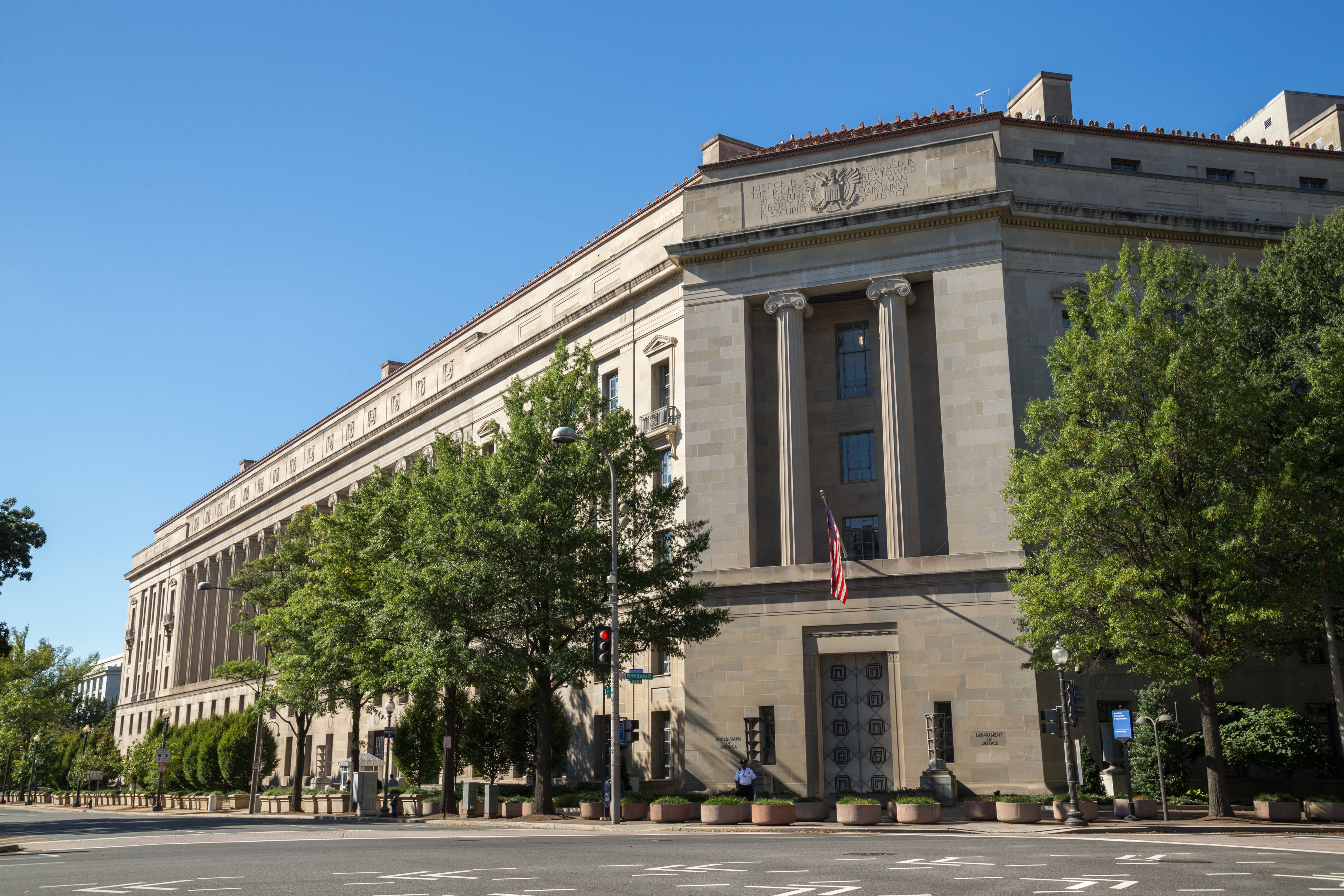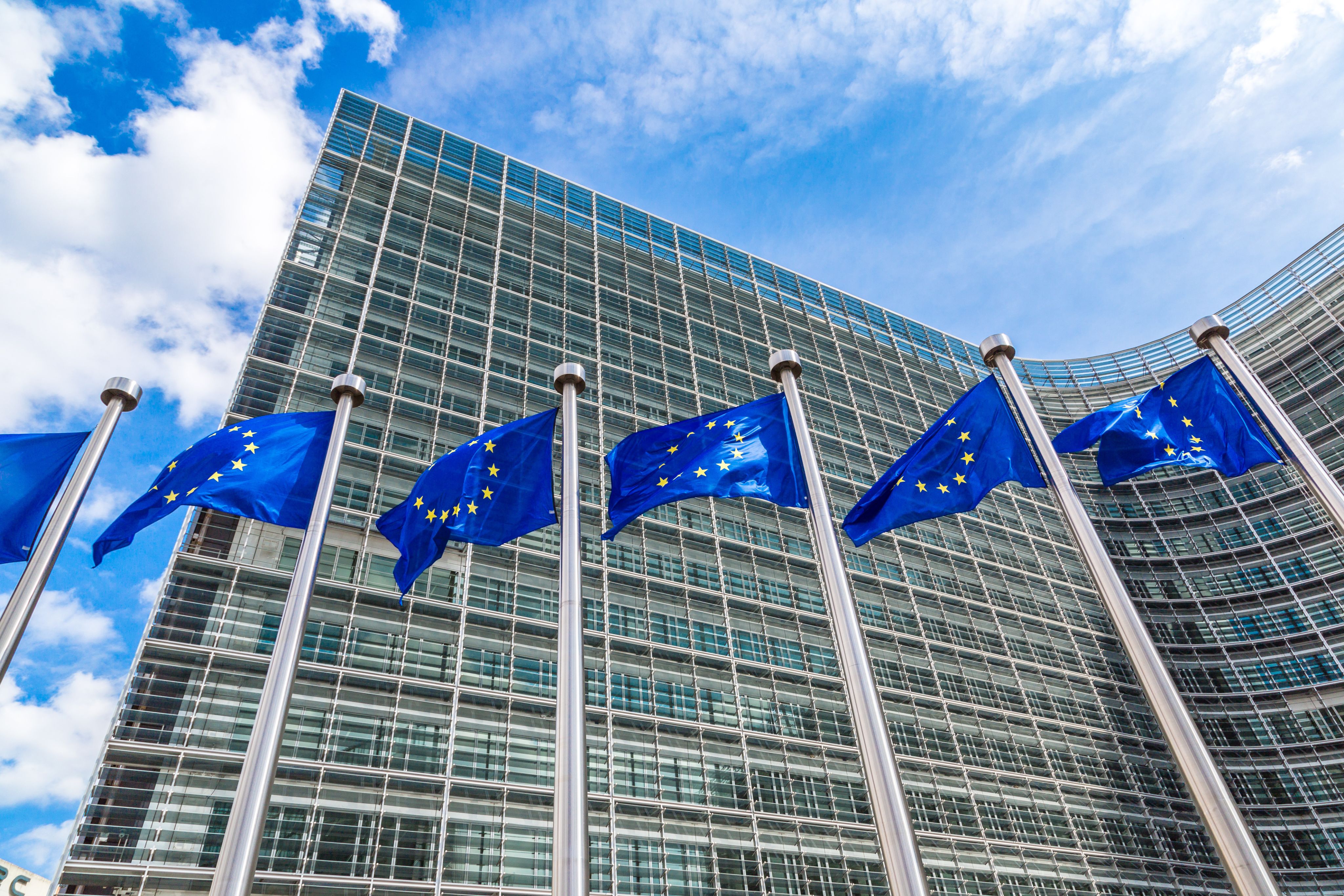The latest M & A insights from MLex®
The latest M & A insights from MLex®
In a busy week of M & A developments, MLex correspondents across the globe published a string of deep dives into the likely impact for business, with highlights from North America, Europe, the UK and Asia Pacific including:
Capital One-Discover deal is set to face intense US antitrust scrutiny
By Flavia Fortes
Kroger-Albertsons deal complicated by state challenges as US FTC focus on horizontal grocery competition winds up
By Ben Brody
Orange, Korean Air EU approvals show telecom and airline deals can get through — but at a steep cost
By Andrew Boyce and Natalie McNelis
Barratt-Redrow housebuilding merger could see minimal impact from UK market study
By Jon Menon
Australian government's sensational merger findings enlighten — and obscure
By Ryan Cropp and James Panichi
Keep scrolling for the stories, or start your 14-day free trial now to receive exclusive insights from our specialist journalists in real time.

Capital One-Discover deal is set to face intense US antitrust scrutiny
20 February 2024
By Flavia Fortes
Capital One’s proposed acquisition of Discover Financial Services for $35.3 billion is certain to attract a lot of antitrust scrutiny from US regulators given how concentrated the credit card issuer market is in the US and the consolidating nature of their deal — vertically integrating Capital One’s credit card lending business with Discover’s network.
Capital One ranks as the fourth-largest player in the US credit card market with $534.5 billion by purchase volume, and Discover holds the sixth position in the market at $210.7 billion in transactions, according to a 2022 Nilson report.
Capital One and Discover are also two of the largest credit card companies in the US by outstanding balances with 10.5 percent and 8 percent market share, respectively. The top ten credit issuers in the report hold over 80 percent of the market. After the transaction, Capital One would become the largest credit card issuer in America, ahead of Chase, American Express and Citibank, which hold 16.5 percent, 12.4 percent and 11.6 percent, respectively.
But Capital One’s clout in the market, if the deal goes through, would come not only from its dominance in the credit card issuers market, but from the integration of its services with Discover’s network.
Discover is a bank that issues credit cards, but also a network that competes with Visa and Mastercard. The company would be set up like American Express, which is both a bank and a network. The proposed deal would vertically integrate Capital One’s credit card services into Discover's credit card network, meaning the combined company would be able to offer products and services currently only available to Amex.
After the deal, Capital One would become a large vertically integrated consumer financial services company at a time when US antitrust regulators have frowned upon further consolidation in industries and when a directive for increased scrutiny of concentrated sectors comes from the president himself.
In 2021, President Biden issued an executive order to promote competition in the American economy, particularly in financial markets, encouraging the revitalization of merger oversight under the Bank Merger Act by bank regulators and the US Department of Justice.
US Assistant Attorney General Jonathan Kanter announced last year that the Division is looking to update its approach to bank merger enforcement. Kanter said that the DOJ will examine the extent to which a transaction threatens to entrench power of the most dominant banks by excluding existing or potential disruptive threats or rivals.
The Consumer Financial Protection Bureau, or CFPB, last week published research finding high levels of concentration and evidence of anticompetitive behavior in the consumer credit card market. The CFPB said that in 2023, the top 30 credit card companies represent about 95 percent of credit card debt, and the top 10 dominate the marketplace.
The National Community Reinvestment Coalition, or NCRC, which opposes the deal, said that Capital One has a terrible track record on compliance — including numerous Bank Secrecy Act and anti-money laundering violations — that should give the regulators pause. In 2021, the Treasury Department fined Capital One $390 million, alleging years of chronic violations of BSAct/AML laws.
US regulators are also skeptical of deals between companies that promise to offer more intense competition to market leaders.
Efficiencies
Capital One said that Discover is the smallest of the four US-based global payments networks and the transaction “adds scale and investment, enabling the Discover network to be more competitive with the largest payments networks and payments companies.”
Discover is the smallest of the credit card networks, behind Visa, Mastercard and Amex. By the credit cards’ outstanding balance, Visa leads the market with 41.7 percent market share, followed by Mastercard with 27.4 percent and Amex with 10.2 percent. Discover has 7.1 percent market share.
Alden Abbott, a former US Federal Trade Commission general counsel who’s now at the free market Mercatus Center at George Mason University, said the deal could make Capital One a more effective competitor and the DOJ “should take into account these potential large efficiencies.”
“Capital One’s proposed acquisition of Discover has the potential to generate substantial welfare-enhancing efficiencies” by bringing Discover up to the profit level of Visa, Mastercard and American Express, said Abbott.
But the DOJ recently rejected a similar argument by JetBlue in its proposed acquisition of Spirit — that the two airlines needed to combine to fight against the largest four airlines. Officials found, on the contrary, that after the merger, a combined JetBlue and Spirit would have more incentive to coordinate with other airlines on price increases and capacity reductions than to compete aggressively with them.
The financial companies’ efficiency arguments are unlikely to gain any traction as well, given the current administration’s skepticism about procompetitive benefits outweighing anticompetitive harms and that benefits would be passed on to consumers.
Capital One said in announcing the deal that the proposed transaction would bring several specific efficiencies, including: creating a global payments platform at scale, with 70 million merchant acceptance points in more than 200 countries and territories; enabling Capital One to leverage its customer base, technology, and data ecosystem to drive more sales for merchants and great deals for consumers and small businesses; and leveraging Capital One's eleven-year technology transformation across a much larger enterprise.
The companies could argue that improvements following acquisitions could make consumers better off, pointing to some of its recent acquisitions and positing that the takeover of Wikibuy enhanced Capital One Shopping; the partnership with Hopper augmented Capital One Travel; and the collaboration with SevenRooms improved Capital One Dining.
But the size of the transaction has already attracted calls for the deal to be stopped. US Senator Elizabeth Warren said in a tweet that “[t]his Wall street deal is dangerous and will harm working people. Regulators must block it immediately.”
The Capital One-Discover deal would "create another colossal too-big-to-fail bank" and would be "indefensible" to approve, according to a statement from Shahid Naeem, senior policy analyst at the American Economic Liberties Project.
Multiple reviews
The companies face not only an antitrust review of their deal, but also scrutiny from bank regulators. And the bank merger regulatory approval process is complex, both procedurally and substantively.
Bank mergers are unique in that in addition to the DOJ review, deals are also looked at by regulators such as the US Federal Reserve, the Office of the Comptroller of the Currency and the Federal Deposit Insurance Corporation, or FDIC. These reviews include analysis of the competitive impact of a proposed merger, but also consider other factors such as the effect on overall financial stability and the combined bank’s financial health.
One of the members of the FDIC’s Board of Directors is required to be the Director of the Consumer Financial Protection Bureau, or CFPB, a position currently held by former FTC Commissioner Rohit Chopra, a vocal critic of concentrated power.
Chopra wrote in late 2021 that major sectors have become more consolidated across the US economy and that consolidation can actually “make it more difficult for smaller players to break in, denying the public of the benefits of competition.”
“At the Consumer Financial Protection Bureau, we’ve also seen how some mergers and acquisitions can create chaos for consumers. Financial companies that rapidly expand through buyouts are often unprepared when it comes to integrating systems and ensuring accuracy of consumer accounts,” Chopra said in a CFPB blog about how regulators should review bank mergers.
Bank regulators’ view of a deal’s competitive impact can sometimes differ from that of the DOJ. In the Fed’s 2019 order approving the BB&T-SunTrust merger, the central bank required two additional branch divestitures beyond what the DOJ had required to resolve antitrust concerns.
Last year, Kanter said that the DOJ is turning over to banking regulators the decision-making on merger remedies in that industry, but reserving the right to challenge those deals.
The companies have proposed a not-super-long timeline for the review of their deal, given that it needs approval from multiple regulators, predicting that the deal would close in late 2024 or early 2025.
The average antitrust duration for significant investigations by the DOJ and the FTC last year was 10.6 months - the lowest timeline since 2018, according to DAMITT, a deal tracker by Dechert law firm. The report notes that merger reviews still may take longer than expected, especially if parties plan to defend a transaction through litigation.

Kroger-Albertsons deal complicated by state challenges as US FTC focus on horizontal grocery competition winds up
16 February 2024
By Ben Brody
Kroger and Albertsons' path to closure for their proposed merger became even more complicated when Colorado followed Washington to become the second state suing to stop the transaction in state court. The lawsuits ahead of federal action are unusual in part because the US Federal Trade Commission investigation appears to be in its closing weeks.
The federal probe is focused largely on concerns about the deal eliminating head-to-head competition between the two grocery chains and still has a possibility of resulting in a challenge, MLex has learned. Additional states could join the FTC if it decides to sue.
The actions mean the merging parties, which also face a challenge from private consumers in federal district court in California, might have to navigate at least four separate lawsuits to close their transaction. Usually, states wait to join up with the FTC if the agency is going to go to court, and they often band together if the FTC won’t sue. Here, they did neither.
Much hinges on what the FTC decides: If it does sue, judges in Seattle and Denver may decide to conserve judicial time by letting the agency’s challenge play out first. State attorneys general may even be content to let the better-resourced federal enforcer take the lead.
Colorado Attorney General Phil Weiser suggested during a press conference he does want the FTC to join the fight. He said he hopes the quality of the state’s complaint “will also help convince the Federal Trade Commission” of the anticompetitive allegations. He urged the agency to make its own, nationwide challenge.
There’s little or nothing, however, that could force the state courts to defer to a federal process if they don’t want to.
That, in turn, could create a long timetable for Kroger and Albertsons, particularly if the FTC sues and eventually loses but the state lawsuits are still ongoing. Colorado has sought a preliminary injunction, but Washington has only sought a permanent injunction with a trial date of next Jan. 21. Kroger and Albertsons, meanwhile, have said they plan to close the deal by this August and, under their current agreement, can extend the deadline in their merger agreement to October.
Nationwide, companies that face state litigation over a merger often view the attorneys general as trying to secure concrete, and perhaps even political, wins for their residents. Defendants, and even some state officials, tend to believe the states can be mollified by additional divestitures or job investments.
Despite the obstacles to closing presented by the multiple lawsuits, Kroger and Albertsons may see the state lawsuits as ultimately manageable, with more targeted commitments resolving them. That would be especially true if the companies are able to beat the FTC by convincing a judge of the thoroughness of the divestitures.
Judges can often be convinced of agency concerns about traditional mergers between head-to-head competitors with high market shares in consolidated industries. Recently, however, courts have also shown much more openness to the idea that divestitures allay these concerns and undermine the need for a deal block. Some merging parties have embraced so-called “litigating the fix” as they believe they can beat the agencies in court as long as they offer a robust solution to the agency’s theories of why the deal is anticompetitive.
Kroger and Albertsons have agreed to divest 413 — and up to 650 — storefronts to a wholesaler in what would be by far the largest ever such sell-off as part of a supermarket deal. The firms have also argued they face competition from superstores like Walmart and online retailers including Amazon.
FTC timing; state concerns
The deal was announced back in October 2022, and received a second request in December2022. Kroger and Albertsons certified substantial compliance in November 2023, but have agreed not to close in an evolving series of semi-formal timing agreements.
In fact, the FTC still seems to be calling the shots on timing: In its request for a preliminary injunction, Colorado said the two companies have told the federal agency “they will not close on their Proposed Merger… before 11:59 p.m. Eastern Standard Time on February 28, 2024, and in the event the FTC files litigation to block the merger, that they would not close before the fifth day after an order on the FTC’s application for a preliminary injunction.”
The timing could extend out even later, in fact: Kroger and Albertsons told the court in Washington state that they would give 30 days’ notice before closing, which they have not done.
The proposed transaction has been unpopular with several states from the beginning: California, Illinois and Washington, DC, all sued unsuccessfully to stop a dividend associated with the transaction. It received congressional scrutiny and concerns from seven state secretaries of state. California Attorney General Rob Bonta said in October he saw “no reason not to sue” to stop the transaction.
Their concerns have often circled around the possibility that localities served only by a Kroger- and an Albertsons-bannered store would lose grocery options and see higher prices. Some of those were especially acute in states with significant rural areas.
Washington, Colorado and maybe the FTC
Both the Washington state case and the Colorado case focused on head-to-head competition, alleging that the deal would raise prices because of anticompetitive consolidation in the market for food and other grocery products. Both states also alleged that a proposed divestiture to C&S Wholesale Grocers would not remedy the ill effects of the deal.
Colorado’s lawsuit went farther in its treatment of labor, however, alleging that Kroger and Albertsons had already engaged in an illegal no-poach agreement in the state when Albertsons agreed in 2022 that it wouldn’t hire striking Kroger workers. The state’s lawsuit also emphasized the importance of local suppliers.
Even when they decide to act separately, state and federal antitrust enforcers often begin their investigations working in tandem, meaning their complaints may provide something of a roadmap to the FTC’s concerns.
FTC Chair Lina Khan is a longtime critic of consolidation in the grocery industry in general and the handling of the divestiture in a prior deal involving Albertsons in particular. In addition, she seemed to suggest concerns about the deal when she attended multiple listening sessions with state attorneys general.
The FTC’s investigation, likewise, seems to have focused on consolidation but, like Colorado in particular, also looked into monopsony issues involving suppliers and workers. Such issues could make it into a challenge if there is one.

Orange, Korean Air EU approvals show telecom and airline deals can get through — but at a steep cost
20 February 2024
By Andrew Boyce and Natalie McNelis
Telecom and airline executives might see a glimmer of hope for consolidation in their industries in recent EU merger approvals, but they may end up wondering if the remedies required are worth it.
Today’s green light for Orange’s merger with MásMóvil confirms that there is a path to EU approval for telecom companies wanting to consolidate European mobile markets. Similarly, last week’s nod to Korean Air’s Asiana takeover showed seeking EU approval for consolidation in the airline industry also isn’t hopeless.
But in both cases, the reviews were long and complicated, and the remedies the watchdog ultimately extracted were very tough.
Orange and MásMóvil only obtained the European Commission’s blessing after a year-long review (plus another year of pre-notification talks).
The regulator was concerned the merger would lead to “significant price increases” for consumers and that they wouldn’t have been “offset” by Orange and MásMóvil’s arguments saying the deal would result in cost savings or the faster roll out of fiber and 5G.
The companies agreed to remedies that will enable Digi, a fast-growing Romanian mobile virtual network operator, to build a network and “replicate” the role MásMóvil plays on the market today.
Loosening the reins?
For telecom executives — who desperately want to reduce the number of operators in Europe to give them the scale to invest — all eyes will be on who succeeds Margrethe Vestager as the EU commissioner overseeing competition policy next year. Will the new commissioner give them an easier ride?
Next month will be two years since Orange and MásMóvil, Spain’s second and fourth largest mobile operators, announced their intentions to merge in a 50:50 joint venture worth 18.6 billion euros ($20 billion).
Executives said the deal was necessary to create a “stronger player” capable of making the “investments required to develop the Spanish market” and invest in new network technologies. As MásMóvil CEO Meinrad Spenger put it: “We need strong operators with sustainable business models.”
This is an argument telecom executives have been airing time and time again, hoping to persuade EU competition regulators to relax their notoriously strict approach to mobile consolidation.
Vestager said yesterday the regulator has no plans to loosen the rules, while noting that there is no policy to block all mobile telecom mergers. Instead, she insisted the commission treats every case on its own merits.
Indeed, today’s press release makes clear the commission isn’t standing down.
Even though MásMóvil was only a “hybrid mobile network operator” relying on a roaming agreement with Orange to provide services to customers covering the whole of Spain, the regulator said the deal would have harmed competition by creating the largest operator by subscriber numbers.
MásMóvil, it said, had “very competitive offers” and had been steadily growing through popular brands like Yoigo that had gained a significant number of customers from Orange. “The transaction would, therefore, eliminate a close and important competitor.”
The predicted price increases would have been “well above 10 percent.”
“Any efficiencies that the transaction could have created, such as cost savings or incremental 5G or fiber roll-out, would not have offset the transaction’s significant anticompetitive effects.”
Orange and MásMóvil welcomed the decision, which they said “takes into account the specificities of the highly competitive Spanish market, with balanced remedies in favor of an already existing player.”
Yet those remedies are unlikely to persuade would-be merger partners far and wide to try their luck.
Orange and MásMóvil had to divest to Digi spectrum across three frequency bands: enough to “enable Digi to build its own mobile network and to exert a strong competitive constraint on the joint venture.”
Digi also got the option of entering a national roaming agreement with the joint venture, which it can use to “complement” its own network. That was because Digi’s new network would likely not cover the whole of Spain.
The idea of giving Digi a leg up had long been a painful one for Orange and MásMóvil. It is one of Europe’s most aggressive operators, with cut-throat pricing. It, rather than MásMóvil, was the “maverick” on the market, the companies argued, saying it did not need a helping hand to compete.
As the commission put it, “Digi is a suitable purchaser for the divested spectrum as it is currently the largest and fastest-growing MVNO in Spain. Digi also has experience as a mobile network operator in other EU member states such as Romania.”
It noted that Digi also had the benefit of owning a relatively large fixed network.
The remedies echo ones that CK Hutchison and Wind had to give to win approval for a joint venture in Italy eight years ago. In that case, the buyer was Iliad, a similarly aggressive French operator, and its entry has since shaken up the market in a way that has come back to bite its much larger rivals.
Clear skies?
The EU’s clearance last week of Korean Air’s takeover of its domestic rival Asiana might prompt similar reflections.
Korean Air knew it was headed into a challenging environment when it asked the EU for approval to take over its rival Asiana in January 2023.
Since the end of 2021, with the demise of the Air Canada-Transat deal and first round of the IAG-Air Europa tie-up, it looked as if airline mergers, no matter where they took place, had little chance of getting past the EU watchdog.
After a year of engagement with the regulator, Air Canada decided to throw in the towel on its bid to take over its small Canadian rival, squarely blaming EU regulatory resistance. It said it had “offered and enhanced a significant package of remedies, which went beyond the commercially reasonable efforts required … and what has been traditionally accepted by the EC in previous airline merger cases.
Then came IAG’s first bid to take over its smaller rival on the Spanish market, Air Europa. Already in the first phase of the investigation, the commission had identified dozens of competitive overlaps.
Spooked by worries that EU commitments would be too much for it to bear — especially in the wake of the pandemic — IAG also decided to abandon its deal at the end of 2021. They decided to try for a second time in December 2023.
So, it was a victory that Korean Air won EU approval, but it was at the price of a remedy package that even opponents of the deal admit was extremely harsh.
It had to divest the whole of Asiana’s lucrative cargo business, and for the four problematic routes, the remedy taker had to be identified and approved in the conditional clearance decision itself — and the closing of the transaction is conditional on the remedy taker actually starting operations on the remedy routes.
Orange’s merger with MásMóvil was supposed to test whether the commission had loosened its approach and would now settle for less. Similarly, international airlines like Lufthansa and IAG were watching Korean Air to predict how the regulator might approach their notified deals.
The answer in both cases is hardly very encouraging.

Barratt-Redrow housebuilding merger could see minimal impact from UK market study
19 February 2024
By Jon Menon
Barratt Development’s acquisition of rival homebuilder Redrow might be considered as unfortunate in its timing, coming so close to an antitrust review of the UK housebuilding market.
The UK’s biggest housebuilder said it would buy the seventh-largest earlier this month; the Competition and Markets Authority is preparing to publish the findings of its market study in coming days.
The merging parties have said that their 2.5 billion-pound ($3.1 billion) deal will need clearance from the CMA, but they may find that the seemingly awkward timing might not be wholly to their detriment.
In November, the CMA said its market study was reviewing whether local competition is being hurt in what it said were “the small number of areas” where large amounts of land are held by a small number of housebuilders. It has noted that such land banks could harm the ability of smaller builders to compete, while allowing larger ones to build more slowly and achieve higher sales prices.
The language here suggests that competition issues aren’t a major problem at a national level in the eyes of the regulator, and that in most areas, land is held by several builders.
The CMA is also examining the size of land banks, although it has said it recognizes “that housebuilders need to hold a pipeline of land” as sites pass through the planning system.
10 percent
Barratt and Redrow have indicated that they don't think their deal would affect the current situation, as the companies have a “complementary” footprint in terms of their geographical presence.
Their deal would create a company known as Barratt Redrow, with a land pipeline of 92,345 plots and the aim of building about 22,000 homes a year in the medium term.
Figures in a working paper published by the CMA in November estimated that the 11 biggest housebuilders owned or controlled land equivalent to 1.17 million plots in 2022. In these terms, then, the combined Barratt Redrow would appear to have a market share of less than 10 percent.
According to data from the Office for National Statistics and calculations based on company filings, the companies accounted for a little over 10 percent of new home completions in the year leading up to June 2023.
This, however, is on a national scale. The CMA will want to scrutinize the data on a local level.
It is still early days for the merger. But the CMA's market study is due to report by the end of this month, and were it to find competition issues in only some parts of the country, it might become clear that minor concessions would be enough to get the deal through.
For example, on a smaller scale, UK plumbing and heating company Wolseley was given antitrust clearance to buy air-conditioning company Kooltech this month after offering to sell a unit in Edinburgh.
But such relatively piecemeal structural remedies aren’t always possible. In 2019, the CMA blocked the merger between Sainsbury’s and Asda after concluding it would lead to higher prices for consumers. The report stated that motorists would also be required to pay increased amounts at more than 125 locations where the supermarkets had filling stations close to each other.
The housebuilder deal is sizeable in the UK, and would surpass Vistry Group’s 1.25 billion-pound acquisition of Countryside Partnerships in 2022. Industry consolidation comes as higher interest rates eat into the affordability of new housing for buyers and companies face inflationary pressures on labor and materials.
Premium end
The parties say the deal will add the Redrow brand to Barratt’s David Wilson Homes and Barratt Homes brands, and that these brands will cater for different sections within the market, offering homes at different price points, with Redrow at the premium end and Barratt appealing to younger families.
On first viewing, some figures published by the companies appear to back up this idea that the companies currently appeal to different types of customers. The average selling price for Redrow homes was 397,000 pounds in the six months to Dec. 31. That’s about 30 percent higher than the comparable figure for Barratt.
Still, the CMA may want to look more closely at the data on local markets to get a clearer picture and examine any overlap among the brands.
The CMA’s market study is a broad piece of work. It has also looked into the potential impact of complicated planning regulations on competition and delays in constructing houses.
The study could lead to a formal market investigation reference, which would involve an in-depth probe into areas of concern and give the CMA legal powers to tackle competition issues directly, or it could make recommendations to the government for legislative change.
The market study was opened on Feb. 28 last year and so is scheduled to be published by Feb. 27, meaning that it will be out long before any probe into the Barratt-Redrow merger might take place.
Barratt’s chief executive David Thomas has given every indication that he expects the deal’s path to clearance to be smooth, with completion in the second half of the year and without hindrance from the market study.
“We understand what’s required in terms of looking at the market and looking at the positioning of this combination,” Thomas said in an investor presentation. “We are very confident that the transaction will get cleared. We’ve a very high level of confidence.”

Australian government's sensational merger findings enlighten — and obscure
21 February 2024
By Ryan Cropp and James Panichi
Australia’s competition minister, Andrew Leigh, doesn’t mind a media release. In fact, so often does he sound off on topics like market concentration, monopoly power and non-compete clauses that most competition watchers have become somewhat desensitized to his name turning up in their inboxes.
But in a speech to a Melbourne think tank in late January, the government’s antitrust guru added a few startling statistics to his usual bromides and catchphrases about the healing effects of competition. In so doing, he dropped a not-so-subtle hint about where the government might be headed with its pending review of the country’s merger laws.
Leigh’s speech, delivered to the Chifley Research Center on Jan. 30, previewed the preliminary results of a Treasury Department study into historical merger activity in Australia, conducted by its newly established Competition Taskforce division.
While the data that informed the research remained out of view, the results were clear, painting a bleak picture for regulatory enforcers.
At the heart of the taskforce’s findings were two headline items. First, the Australian Competition & Consumer Commission, or ACCC, has historically been able to see less than a third of all merger activity going on each year; second, the largest 1 percent of companies had accounted for over half of all takeovers.
The results of the study were quickly regurgitated across Australia’s business press, which has been convulsed over the last 12 months with competition controversies involving some of the country’s biggest corporate duopolies, including airlines Qantas and Virgin, as well as supermarkets Coles and Woolworths.
The research was also manna from heaven for supporters of tougher merger laws — supporters that include the ACCC — who have long argued that Australia’s voluntary merger-notification system allows too many potentially anticompetitive mergers to fly under the radar.
However, not everyone greeted the findings with such enthusiasm. According to some prominent critics, most notably the Law Council of Australia, the Treasury research wasn’t quite the knockout blow the ACCC had been hoping for, with even the veracity of the taskforce’s claims being called into question.
For others, though, including a well-placed government official with close knowledge of the merger-law discussion, the dispute simply reinforced a much broader problem for Australian policymakers: when it comes to mergers, there just aren’t enough good data to go around.
According to the official, barely any of the consequential mergers completed in Australia in recent decades have been subjected to proper “ex-post” analysis of their effects by regulators or public policy experts, leaving an information vacuum at the heart of competition policy discussions.
But the evidence-based public policy may have already bolted in Australia’s merger debate. At this critical stage of the policymaking process, advocates on both sides are proving themselves adept at jumping on any new evidence that seems to support their case.
The taskforce has yet to provide its advice to government and the executive has remained tight-lipped about its policy preferences. But what now appears increasingly likely to those reading the tea leaves is that whatever data are available to government officials, they’ll be deployed in support of the model Canberra has chosen.
Horses and carts
In his speech to the Chifley Institute, Leigh said the taskforce had been attempting to create an evidence base to inform its work, which would include investment in “new data assets to support competition policy development and regulation into the future.”
According to Leigh, the taskforce study used micro-data from the Australian Bureau of Statistics to track worker movements between businesses. In support of the minister’s announcement, the taskforce published a six-page document summarizing its methodology, along with a dot-point breakdown of the preliminary findings.
The study found that between 1,000 and 1,500 mergers were taking place in Australia each year, dwarfing the number of mergers the ACCC had managed to review annually over the past 10 years, which sat at around 330.
Leigh also added that the taskforce intended to produce a number of additional research papers later this year, including studies of the entry and exit rates of employing businesses, industry concentration measures, markups, the share of high-growth firms, and the proportion of employment generated by “young business.”
The day after Leigh’s speech, ACCC Chair Gina Cass-Gottlieb mentioned the Treasury research while speaking via videolink at a major conference of global regulators.
Later that week, the watchdog issued a long press release noting the two key findings and reiterating the watchdog’s concern about anticompetitive deals that weren’t notified — with pet-supply retailer Petstock and its stealthy shop-by-shop acquisition campaign becoming the poster child for the ACCC’s concerns.
According to the Law Council’s Competition and Consumer Committee, though, Australia’s merger-law debate suffers from a lack of robust evidence demonstrating a problem with the existing merger regime.
In a second submission to the government’s ongoing merger law review, published on Feb. 8, the top representative body of Australian lawyers challenged the veracity of the taskforce’s findings — especially as they had been interpreted by the ACCC — and questioned why more detailed data had not been released and subjected to independent scrutiny.
“The [Law Council Competition and Consumer Committee] doesn’t consider that this limited information can be regarded as a sufficient basis for the sweeping changes being proposed by the ACCC,” the lawyers’ submission said.
According to the Law Council’s own back-of-the-envelope analysis, as a proportion of total merger activity, the ACCC already sees more deals under the existing voluntary system than its counterparts do under mandatory regimes overseas.
One prominent competition lawyer who spoke to MLex on condition of anonymity described the Treasury research as “bullshit” and said it was unlikely that the ACCC would have any interest in most of the mergers captured by the new data.
“How many of these unnotified deals involved mergers between two hairdressers?” another asked.
At an Australian Senate hearing last week, Competition Taskforce Assistant Secretary Owen Freestone said that the findings presented by Leigh on Jan. 30 were “high-level results” and that a “more detailed product” wouldn’t be available for “a number of months.”
But at the same hearing, both Treasury First Assistant Secretary Jason McDonald and Chief Adviser Marcus Bezzi indicated that the taskforce had been in discussions on the merger-law issue with the office of Australian Treasurer Jim Chalmers, with McDonald adding that advice would be issued “in the near term.”
In an interview with MLex on the day of the Chifley Institute speech, Leigh said the government intended to make a more detailed version of the data publicly available before it made any decisions on mergers.
Reading between the lines, this seems to indicate that the taskforce will soon make an initial recommendation to the government on its preferred merger model, while the more detailed version of the research data will inform the specific design of that chosen model, such as where to set notification thresholds, in coming months.
That may not be enough to appease the critics, who say that without subjecting the research to independent scrutiny, the taskforce is putting the cart before the horse.
Information vacuum
In an interview with MLex, a well-placed government official said that it wasn’t surprising that the taskforce would take its time before publishing the research in its entirety — policy formulation can’t be rushed. Yet there could be no denying that there’s a general lack of quality data on mergers in Australia that makes it difficult to properly provide evidence for any policy proposals, either in support of that status quo or against it, the official said.
Unlike the US, the official said, Australia’s regulators and public-policy professionals don’t have a good track record of conducting significant ex-post assessments of the competitive effects of major merger decisions.
Former ACCC Chair Rod Sims, who led the agency for over a decade before handing over the reins 18 months ago, said the watchdog had done some ex-post merger analysis in the past, but had kept it in-house due to confidentiality concerns.
“If you're going to put something out publicly [instead of] doing something internally, you can just imagine the effort you'd have to go to,” Sims told MLex.
“I think more is done internally than people realize,” he said, adding that resource constraints were a major factor contributing to the paucity of ex-post analysis being conducted by the regulator.
Others argue that such analysis should be conducted independently of government or government agencies.
In a recent interview with MLex, a former senior official at the Productivity Commission, an independent government-advisory agency, said it was unprecedented that the research operations of the taskforce had been set up so close to the government’s Treasury Department.
Ideally, the former official said, the Productivity Commission itself should have done some independent analysis and made policy recommendations at arms length from the government.
Another well-placed government official agreed, arguing that ex-post merger assessments should be done publicly and independently — preferably by academics.
“You want an independent party to come along later on and say, ‘hey, let's look at these [merger decisions]. Let's see how good they were.’ This is good regulatory practice,” the official said.
“I don’t think the taskforce is doing anything unusual,” the official said. “But they're sort of saying ‘look, we haven't done the work yet.’”
According to the government insider, there will likely be a lot more detail in the taskforce’s next set of papers, including draft policy recommendations that are backed up by fairly rigorous evidence. “This stuff takes time,” the official said.
For those opposed to change, however, it might be too little, too late.


